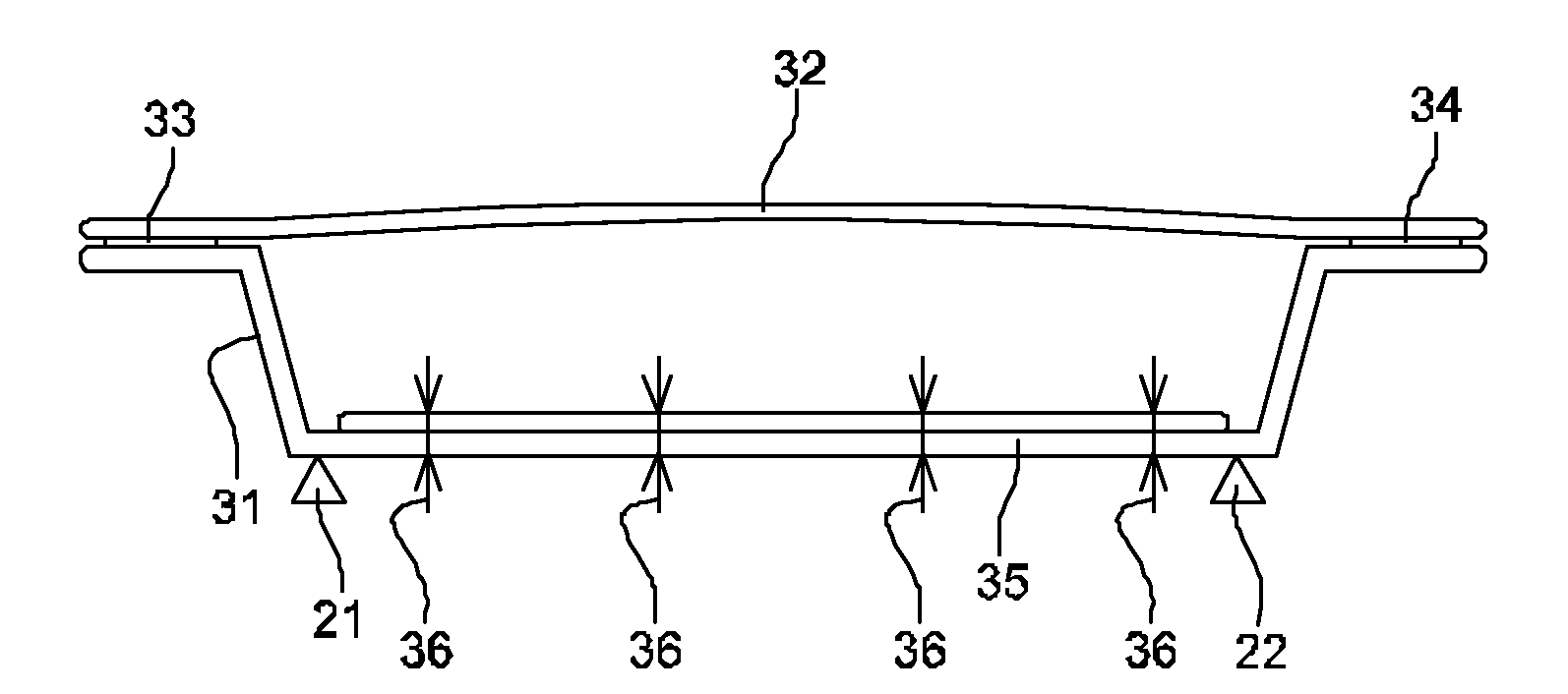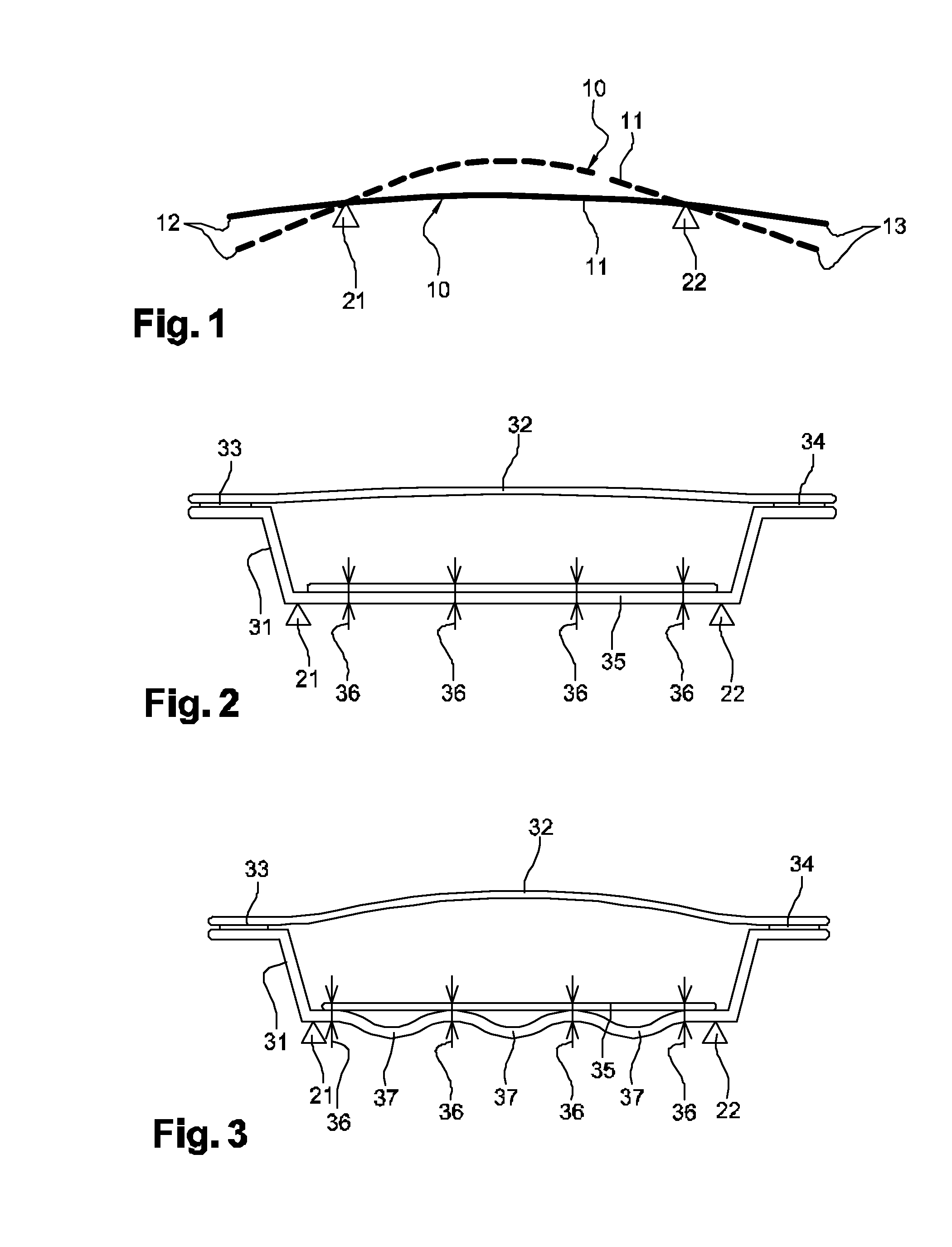Motor vehicle component that withstands thermal deformation
a technology for motor vehicles and components, applied in the field of motor vehicle bodywork parts, can solve the problems of limited choice, defects, and plastic material defects, and achieve the effects of low cost, reduced manufacturing costs, and reduced manufacturing costs
- Summary
- Abstract
- Description
- Claims
- Application Information
AI Technical Summary
Benefits of technology
Problems solved by technology
Method used
Image
Examples
Embodiment Construction
[0033]FIG. 1 is a diagrammatic view of a motor vehicle bodywork component. In this example, the component is a structure 10 represented by a continuous line in a situation in which it is not subjected to any expansion, and by a dashed line in a situation where it is exposed to intense solar radiation.
[0034]The structure 10 is fastened to the body of the vehicle by two hinges 21 and 22 represented by triangles. Since the body of the vehicle is made of a material having a smaller coefficient of expansion than the structure 10, the hinges 21 and 22 are spaced apart by a distance that is constant under both of the presently-considered situations, with or without sunshine. Thus, the structure 10 presents a central portion 11 situated between the hinges 21 and 22, which central portion 11 is subjected to stress horizontally by the hinges 21 and 22. An expansion of this central portion 11 thus gives rise to the vehicle being outwardly deformed in bending or “bulging”. By continuity, the ma...
PUM
| Property | Measurement | Unit |
|---|---|---|
| thickness | aaaaa | aaaaa |
| thickness | aaaaa | aaaaa |
| thickness | aaaaa | aaaaa |
Abstract
Description
Claims
Application Information
 Login to View More
Login to View More - R&D
- Intellectual Property
- Life Sciences
- Materials
- Tech Scout
- Unparalleled Data Quality
- Higher Quality Content
- 60% Fewer Hallucinations
Browse by: Latest US Patents, China's latest patents, Technical Efficacy Thesaurus, Application Domain, Technology Topic, Popular Technical Reports.
© 2025 PatSnap. All rights reserved.Legal|Privacy policy|Modern Slavery Act Transparency Statement|Sitemap|About US| Contact US: help@patsnap.com


